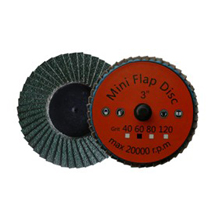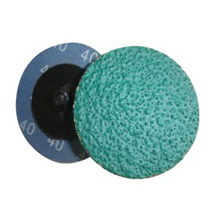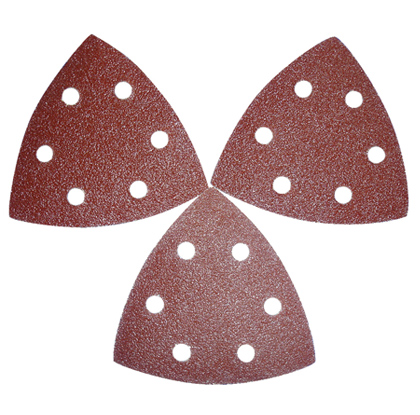roloc disc
Related
"Roloc Disc"
Products
Related "Roloc Disc" Keywords
Related blog
Tungsten the abrasive belt saw blade
Tungsten the abrasive belt saw blade and diamond (sand) with the difference between the different characteristics of the saw blade?The tungsten the sand band saw (blade) compared to the advantages of carbide band saw or diamond withA. carbide saw with:A * saw superhard metal, an alloyCarbide saws with usually three teeth per inch. Sawing size of less than 2 inches (50mm) of the hard metal or alloy, and each tooth to withstand the power will be too large, resulting in tooth fracture. Breaking a tooth, the whole band saw will be scrapped. The wolfram Saw with hundreds into the the sawing teeth, therefore good cutting tool.* Sawing reinforced composite materialMany composites contain advanced reinforced material, such as glass fiber, Kevlar fiber, ceramics, cutting wheel and Nuomeikesi polyamide. They may contain different brands of resin, or a laminate of different materials. These reinforcing material will make jagged to pull off. The composite material itself is very abrasive, even Carbide Saw band may be worn not sharp. Rubber tires containing metal wire, the traditional serrated will be pulled off.* Sawing material containing poresSaw engine, gas flow meter and other industrial heat exchangers, the saw blade is needed in these sawing was in the hole in the back and forth. Serrated to the sink hole, when it encounters a very rigid cross section, and its location is too low, abrasive disc,will be exposed to great force, causing the tooth portions pulled off.
Cross-grinding is a common type of grinding
Cross-grinding is a common type of grinding: P3, P5 and P9. P3 drill point angle of 135 °, P5 is 118 °, and P9 is a cobalt-based cemented carbide made of P3 drill, drill point angle is 135 °. Cross grinding drill good self centering performance, for example, the formation of a 0.05mm ~ 0.2mm drill core thickness 6.35mm ~ 12.7mm diameter drill bit, Phillips grinding, like needlepoint, self-centering.
Choiniere, the Superion company manager, said that in order to drill holes in the raised surface, usually on the bit to make a self-centering tip point to ensure the cusp first contact with the workpiece to the drill bit diameter, that is, if the operator to tilt 15 ° convex surface drilling, then the angle of inclination of the cutting edge of all the drill must be greater than 15 °, so that the drill bit tip of the first contact with the workpiece surface, otherwise, the operator must make use of the relatively flat end cutting edges of the tool (such as end milling the first milling cutters), generally greater than 6 ° slant drilling application endmills, pre-processing, prevents drilling offset or cited biased.abrasive wheel
According to Geske introduction, select the depth of the drill bit and drilling. Because this will affect the type of drill bit (such as the drill bit is conventional channel-shaped, or parabolic trough). Recommend using parabolic trough hole depth is greater than four times the diameter of the drill bit. Wide trench, allowing faster cutting speed and a larger hole depth.grinding wheel
Structural design of steel bonded carbide drill
Steel bonded carbide drill bit processing copper-nickel alloy, has a large advantage in cutting efficiency and tool life, but because of its strength is lower than the high-speed steel cutting tools, such as the use of a standard type of twist drill structure, can not be normal processing.K value of 2.1 increases the thickness of the core drilling
National standards, coring per 100mm thickness K value increased 1.4 ~ 2.0mm, now changed to 100mm increases from 2.2 to 2.8 mm. Increase the thickness of the core drilling can increase the stiffness of drill cutting part.cutting wheel
2.2 reduce the helix angle β
National standards? 15mm twist drill helix angle b = 30 °, β = 25 ° now changed. Reduce the helix angle is conducive to sticky and hard chips discharged smoothly.
2.3 main cutting edge additional points of flute
Three crescent-shaped cross-out on the main cutting edge in two symmetrical 180 ° flute, to reduce axial cutting forces, and to create favorable conditions for chip removal.
2.4 to reduce the the edge bandwidth degrees f
National standards? 15mm twist drill blade width f = 1.0mm f = 0.75 mm, current decrease. Reducing the blade width can reduce the friction of the edge with the hole wall,grinding wheel and reduce tool wear.
2.5 grinding chisel edge
Drilling the size of the axial force with the lateral edge of the size is closely related to reduce the cutting resistance, the chisel blade width was changed to 0.7 ~ 1.0mm (about 1/3 of the width of the chisel edge, the original).
How to choose the tool geometry parameters cutting stainless steel
1) the rake angle γ0 of: stainless steel the hardness, strength is not high, are better but the ductility, toughness, high thermal strength, the cutting chips can not be easily cut off. Premise tool have sufficient strength, should be used in a large rake angle, so that not only can reduce the plastic deformation of the metal cutting, but also can reduce the cutting forces and temperatures, while the depth of the hardened layer is reduced.
The rake angle of the turning of various stainless steel is substantially 12 ° ~ 30 °. Of martensitic stainless steel (2Cr13), rake angle desirable value; austenitic and austenitic + ferritic stainless steel, the anterior horn whichever is smaller; processing without quenched and tempered or quenched and tempered hardness lower stainless steel, desirable larger anterior horn; smaller diameter or thin-walled workpieces, should adopt a large rake angle.
High-speed steel cutters take γn = 10 ° to 20 ° the carbide cutters take γn = 5 ° to 10 °; the reamer and generally γ0 = 8 ° to 12 °; Taps generally take γ0 = 15 ° to 20 ° ( machine) or γ0 = 20 ° (hand).cutting wheel
2) after the angle α0: increase the angle can reduce the flank and the machined surface friction, but will make the cutting edge of strength and reduce the cooling capacity. The posterior horn reasonable value depends on the thickness of cutting, cutting thickness hour, should choose a larger rear corner.cutting disc
Stainless steel turning or boring tool usually take α0 = 10 ° ~ 20 ° (finishing) or α0 = 6 ° ~ 10 ° (roughing); α0 = 10 ° to 20 ° of high-speed steel end mills, end mills take α0 = 15 ° ~ 20 °; hardness alloy end mill take α0 = 5 ° ~ 10 °, the mills take α0 = 12 ° to 16 °; reamer and tap to take α0 = 8 ° to 12 °.
3) the master the declination the kr, vice declination k'r, and the re: reducing the main declination can increase the length of the blade work, is conducive to heat, but in the cutting process, to increased radial force, prone to vibration, often take kr = 45 ° ~ 75 °, rigidity, may be appropriate to increase. Vice declination often take k'r = 8 ° ~ 15 °. In order to strengthen the tool tip, should generally be milled e = 0.5 to 1.0 mm tip arc.



 Check for detail
Check for detail

